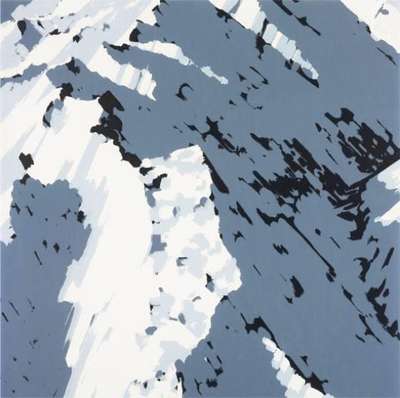
Schweizer Alpen I - A1

Schweizer Alpen I - A1
Signed Print
Gerhard Richter
£16,000-£23,000Value Indicator
$35,000-$50,000 Value Indicator
$30,000-$45,000 Value Indicator
¥160,000-¥220,000 Value Indicator
€19,000-€27,000 Value Indicator
$170,000-$240,000 Value Indicator
¥3,040,000-¥4,370,000 Value Indicator
$21,000-$30,000 Value Indicator
AAGR (5 years) This estimate blends recent public auction records with our own private sale data and network demand.
There aren't enough data points on this work for a comprehensive result. Please speak to a specialist by making an enquiry.
Medium: Screenprint
Edition size: 300
Year: 1969
Size: H 69cm x W 69cm
Signed: Yes
Format: Signed Print
TradingFloor
Track this artwork in realtime
Watch artwork, manage valuations, track your portfolio and return against your collection
Track auction value trend
Auction Results
| Auction Date | Auction House | Location | Hammer Price | Return to Seller | Buyer Paid |
|---|---|---|---|---|---|
| November 2024 | Van Ham Fine Art Auctions | Germany | |||
| December 2023 | Grisebach | Germany | |||
| June 2023 | Van Ham Fine Art Auctions | Germany | |||
| May 2023 | Grisebach | Germany | |||
| May 2020 | Bonhams Los Angeles | United States | |||
| November 2019 | Van Ham Fine Art Auctions | Germany | |||
| October 2019 | Van Ham Fine Art Auctions | Germany |
Meaning & Analysis
This print is the work of German visual artist, Gerhard Richter. Part of the Swiss Alps collection, the print was issued in 1969 and in an edition of 300. Signed by the artist, it comprises a semi-abstract depiction of a mountain scene.
Like other works in the Swiss Alps collection, such as Schweizer Alpen II - A1, Schweizer Alpen I - A1 constitutes further visual evidence of Richter’s long fascination for both abstraction and realism. Situated at the interface between these two modes of representation, Richter is here shown to be naturally adept at bringing them together and interweaving them. In this particular print, brighter sections of monochromatic colour fill the negative space created by other, altogether darker sections of grey, creating the visual illusion of depth. Evoking the perilous depths of a mountainside, the work’s two ‘sections’ meet to form a ridge. The ‘summit’ of the image, where the viewer’s eye is incessantly led, this ridge makes a claim to realism that is always subsequently abstracted, the artist’s gestural, economical brush marks creating a representational ‘fault line’ that never fails to entrance.
Richter is no stranger to landscape painting. Although well known for his historical portraits, such as Elisabeth II (1966) and the world-famous 48 Portraits (1972) series, the artist has long held a fascination for the natural world. Finding its first expression in 1968, when landscapes first appeared as a major component in Richter’s œuvre, this fascination has sustained Richter’s interest in the abstraction present in the natural world. Very much present in the Swiss Alps collection, this has also been referenced in the artist’s Canaries Landscapes collection, comprising works completed in 1971. Working from photographs, rather than en plein air, Richter’s landscapes are extremely diverse in style and span, and have since bled into the artist’s Cage paintings.










